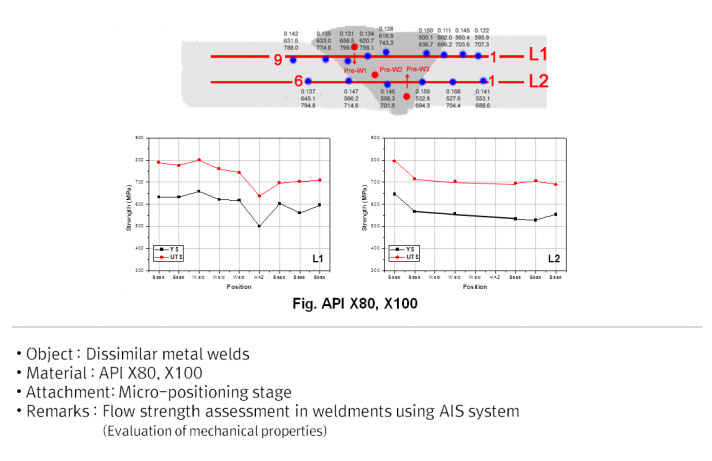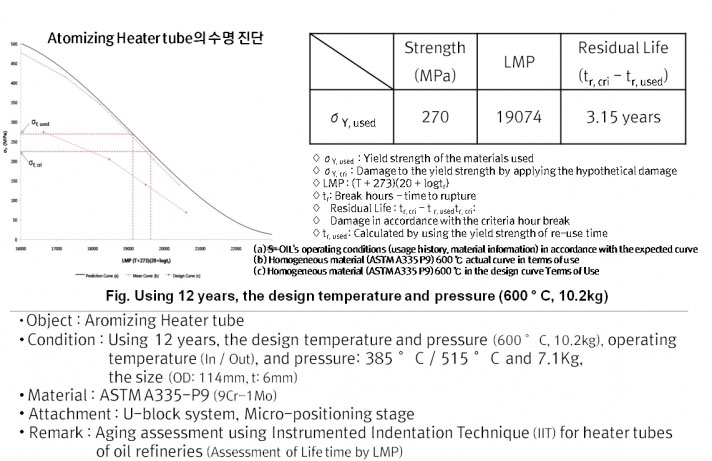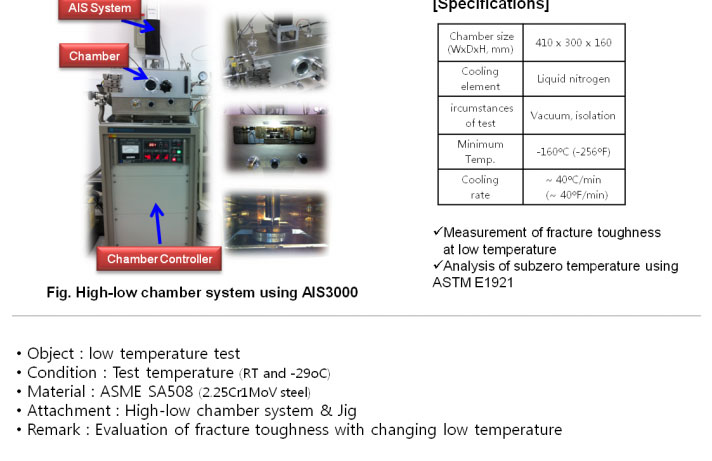Therefore, for the safe use of old facilities, it is necessary to accurately predict the lifespan through regular diagnosis of material properties.
Therefore, for the safe use of these old industrial facilities and facility management, in addition to the existing laboratory background mechanical property evaluation techniques, it is urgent to supplement the system that determines the timing of replacement and repair by securing/collecting data on material deterioration and life prediction, and determining the risk and inspection cycle of equipment through this by introducing technology to monitor material characteristics according to temperature aging in industrial sites. In order to utilize these developed materials in industries, it is necessary to secure the reliability of materials and parts based on the accumulation of accurate properties through the application of appropriate property evaluation techniques.
Uniaxial tensile and fracture mechanics tests, which are the existing standard methods for material property evaluation, provide a lot of information on deformation and fracture behavior. However, since standard specimens in bulk form are required, damage may be caused by notches in equipment and structures in the process of collecting specimens, which may rather harm the safety of the structure, and due to stress relief and damage during collection, standard specimens may have different properties from the original site structure.
In addition, looking at the requirements of the test technique for application to the property evaluation of micromaterials, first, it is necessary to evaluate the mechanical properties of only thin films having a thickness of at least several hundred Å, and in the case of nano-phases, grasp the mechanical properties of each phase. In order to do this, it is necessary to be able to limit the inside of the crystal grains to the area of the property evaluation.



Structures built in the period of rapid economic growth in the 1970s are severely deteriorated due to over 30 years of use and have the potential for large industrial accidents.
As a solution to these problems, an automated indentation technique that can be used directly in the field because it is quasi-non-destructive and has a simple test method, and a nano indentation technique with an indentation depth of about nm with the application of extremely low loads were proposed.
These test methods are a method to calculate the continuous deformation behavior during the indentation test as an indentation load-displacement curve and to evaluate the mechanical properties related to various deformations and fractures based on this, unlike the existing hardness test that only obtains hardness. The automated indentation technique can evaluate not only hardness but also fracture characteristics based on appropriate modeling and flow characteristics of materials, including yield strength, tensile strength, and processing hardening index, such as uniaxial tensile tests, by analyzing the indentation situation during spherical indentation.
In addition, in the nano-indentation technique, where the study of evaluating the hardness and modulus of elasticity using a pointed indenter with a certain angle was mainly used to evaluate the properties of thin film materials and nanophase, recently, researches are underway to evaluate high-dimensional properties related to deformations such as flow curves by incorporating the techniques analyzed in the automated indentation technique. In addition, these property evaluation techniques can evaluate local weaknesses such as welds through changes in indenter size and shape, or even evaluate material behavior in various deterioration situations through attachment of an atmosphere device.

